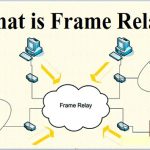Special Instructional Objective
On completion of this lesson, the student will be able to:
· State the key features of X.25
· Explain the frame format of X.25
· Specify the function of the Packet layer of X.25
· State the limitations of X.25
Introduction
In the early 1970’s there were many data communication networks (also known as Public Networks), which were owned by private companies, organizations and governments agencies. Since those public networks were quite different internally, and the interconnection of networks was growing very fast, there was a need for a common network interface protocol.
In 1976 X.25 was recommended as the desired protocol by the International Consultative Committee for Telegraphy and Telephony (CCITT) called the International Telecommunication Union (ITU) since 1993.
X.25 is a standard for WAN communications that defines how connections between user devices and network devices are established and maintained. X.25 is designed to operate effectively regardless of the type of systems connected to the network. It is typically used in the packet-switched networks (PSNs) of common carriers, such as the telephone companies. Subscribers are charged based on their use of the network.
X.25 Devices and Protocol Operation
X.25 network devices fall into three general categories: data terminal equipment (DTE), data circuit-terminating equipment (DCE), and packet-switching exchange (PSE) as shown in Fig.
Data terminal equipment (DTE) devices are end systems that communicate across the X.25 network. They are usually terminals, personal computers, or network hosts, and are located on the premises of individual subscribers. Data communication Equipment’s (DCEs) are communications devices, such as modems and packet switches that provide the interface between DTE devices and a PSE, and are generally located in the carrier’s facilities.

X.25 network
PSEs are switches that compose the bulk of the carrier’s network. They transfer data from one DTE device to another through the X.25 PSN. Figure 4.4.1 illustrates the relationships among the three types of X.25 network devices
Packet Assembler/Disassembler
The packet assembler/disassembler (PAD) is a device commonly found in X.25 networks. PADs are used when a DTE device, such as a character-mode terminal, is too simple to implement the full X.25 functionality. The PAD is located between a DTE device and a DCE device, and it performs three primary functions: buffering (storing data until a device is ready to process it), packet assembly, and packet disassembly. The PAD buffers data sent to or from the DTE device. It also assembles outgoing data into packets and forwards them to the DCE device. (This includes adding an X.25 header.) Finally, the PAD disassembles incoming packets before forwarding the data to the DTE. (This includes removing the X.25 header) Figure illustrates the basic operation of the PAD when receiving packets from the X.25 WAN.

PADs
X.25 session establishment and virtual circuits
Session Establishment
X.25 sessions are established when one DTE device contacts another to request a communication session. It’s up to the receiving DTE whether to accept or refuse the connection. If the request is accepted, the two systems begin full-duplex communication. Either DTE device can terminate the connection. After the session is terminated, any further communication requires the establishment of a new session.
Virtual Circuits
The X.25 is a packet-switched virtual circuit network. A virtual circuit is a logical connection created to ensure reliable communication between two network devices. A virtual circuit denotes the existence of a logical, bidirectional path from one DTE device to another across an X.25 network. Physically, the connection can pass through any number of intermediate nodes, such as DCE devices and PSEs. Virtual circuits in X.25 are created at the network layer such that multiple virtual circuits (logical connections) can be multiplexed onto a single physical circuit (a physical connection). Virtual circuits are demultiplexed at the remote end, and data is sent to the appropriate destinations.

Figure illustrates separate virtual circuits being multiplexed onto a single physical circuit.

Figure Physical Circuits and Virtual Circuit
Two types of X.25 virtual circuits exist: switched and permanent. Switched virtual circuits (SVCs) are temporary connections used for sporadic data transfers. They require that two DTE devices to establish, maintain, and terminate a session each time the devices need to communicate. Permanent virtual circuits (PVCs) are permanently established connections used for frequent and consistent data transfers. PVCs do not require that sessions be established and terminated. Therefore, DTEs can begin transferring data whenever necessary because the session is always active.
The basic operation of an X.25 virtual circuit begins when the source DTE device specifies the virtual circuit to be used (in the packet headers) and then sends the packets to a locally connected DCE device. At this point, the local DCE device examines the packet headers to determine which virtual circuit to use and then sends the packets to the closest PSE in the path of that virtual circuit. PSEs (switches) pass the traffic to the next intermediate node in the path, which may be another switch or the remote DCE device.
When the traffic arrives at the remote DCE device, the packet headers are examined, and the destination address is determined. The packets are then sent to the destination DTE device. If communication occurs over an SVC and neither device has additional data to transfer, the virtual circuit is terminated.



Comments are closed